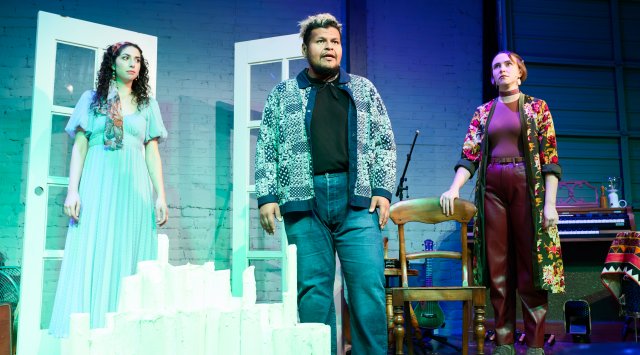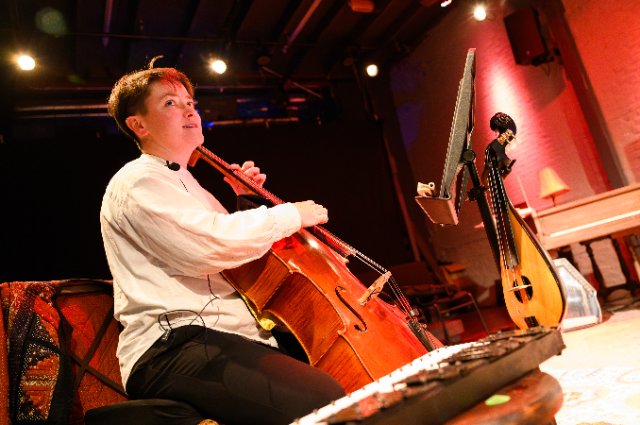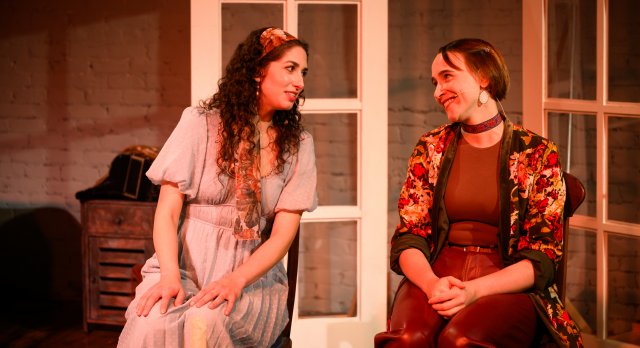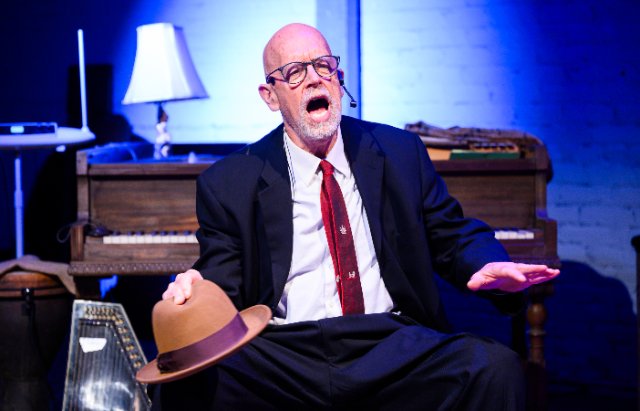Ghost Quartet
A Spooky Look into the Afterlife Through Song
By: Victor Cordell - Nov 05, 2024
On the heels of Halloween and Día de los Muertos, 'tis the season of the witch. And what better way to spend a ghoulish evening than experiencing Ghost Quartet composer Dave Malloy's musical homage to apparitions and to that thin line between this world and the beyond. It is a dark night brightened by song. Oakland Theater Project (OTP) and New Performance Traditions present an intimate, scintillating, and entertaining rendition of this unique work.
An accomplished composer, Malloy’s pop opera Natasha, Pierre, & the Great Comet of 1812 draws from Tolstoy’s eminent novel War and Peace. For Ghost Quartet, he replicates the sung-through musical format but builds the songs around a theme, the afterlife, rather than a source. The resulting song cycle is an amorphous pastiche rather than a linear accretion. However, there are repeat focal points that bind the text. Sisters Rose and Roxy, the House of Usher, photography, astronomy, and whiskey recur among others.
A small space is the preferred venue for Ghost Quartet, and OTP’s home at Flax Art & Design suits perfectly with the audience on three sides and artists spread around the edges of the performing space, creating the effect that "they" are among us. The piece is designed for four instrumentalist/singers, but this production includes a fifth (performer, that is, not bottle of whiskey!).
The structural conceit reflects a two-record album, with each song a numbered track on a side of a record. Song titles are announced, which helps when they are audible. One weakness in this format is that a clear narrative is hard to follow with the provocative and sometime confusing song sketches, ever-shifting in time and place which vary from 14th century Persia to contemporary New York City. In addition, characters like Rose have various manifestations, making it more difficult to grasp a through-line to the narrative.
The sources of musical idiom are almost as numerous as the number of songs, but in the aggregate, the music is melodious and highly compelling with an overall feel of folk pop. The lyrics are thoughtful. An early example, "Soldier and Rose" exhibits both Middle Eastern and country music elements, while the jazzier "Monk" pays tribute to jazz great Thelonious Monk, one of Malloy's influences. Blues, American folk, electropop, and others also make a showing. The only non-original song is the Scots-English murder ballad that closes the show, “The Wind and Rain,” which no doubt was an inspiration to Ghost Quartet, as its chronicle parallels the lead plot line in the song cycle.
Monica Rose Slater takes on most of the lead singing. With an expressive manner and opera-trained soprano voice, she demonstrates great vocal power and control where necessary. Her female singing partner is Veronica Renner, who also pleases in her solos and harmonies. The male lead, who usually sings harmonies and acts as the primary keyboard player, is highly decorated musician Rinde Eckert.
But the sound that best characterizes and drives the musical score is Ami Nashimoto’s exquisite cello play. The instrument works perfectly, primarily when producing deep, mournful sounds reminiscent of the darker songs of The Beatles like “Eleanor Rigby.” In addition, sharp, trenchant bursts akin to Bernard Herman’s violin shrieking in the shower scene from Psycho add disquiet.
Eckert’s keyboards provide a constant underpinning to the music, but the other element that provides distinctive sound is the many featured instruments that add spice. Among those that have cameo roles are a Greek three-string lyra, a home-made Latin American 10-string guitar, Buddhist temple bells, and an autoharp, not to mention strumming and plucking piano strings as well as a theremin, the electronic device that produces differing musical tones without touch.
The creative team led by Director William Thomas Hodgson creates a seamless experience. Given the overall concept of the work, lighting is especially important. Dr. Stephanie Anne Johnson’s lighting design is, perhaps intentionally, tame in the early goings with only faded darkening between songs. But it picks up energy and uses a number of schemes to add to the atmospherics. Stars are projected on the wall; the whole theater is darkened except for a small, glowing blob representing an assemblage of candles in the middle of the stage; a flashlit face provides illumination; lamps are employed. Sound is also an essential aspect of spookiness, and Sound Engineer Trevaj “True” Siller adjusts the amplification occasionally so that the singer’s voice sounds disembodied.
This is perhaps a good time to mention the performing fifth-wheel, Michael Perez. Also the company’s Operations Manager, his primary role in the play is to introduce the songs and play various handheld percussion instruments as needed. It is also appropriate to note that the production misses the opportunity to festoon the theater with signs of the other-worldly holidays, as with skeleton and ghost decorations, or to emit ominous whirring sounds.
So, is there a message to this delightfully engaging musical? The revelation occurs in the seventh of 23 songs in the program. And the answer is - "Any kind of dead person" would prefer to be a ghost! Not a poltergeist or a zombie or any of those other strange otherworldly creatures, but a ghost. So, there you have it.
Ghost Quartet with music, lyrics, and text by Dave Malloy is produced by Oakland Theater Project and New Performance Traditions and plays at FLAX art & design, 1501 Martin Luther King Jr Way, Oakland, CA through November 24, 2024 and at ODC Theater, 3153 17th Street, San Francisco, CA December 5-8, 2024.





